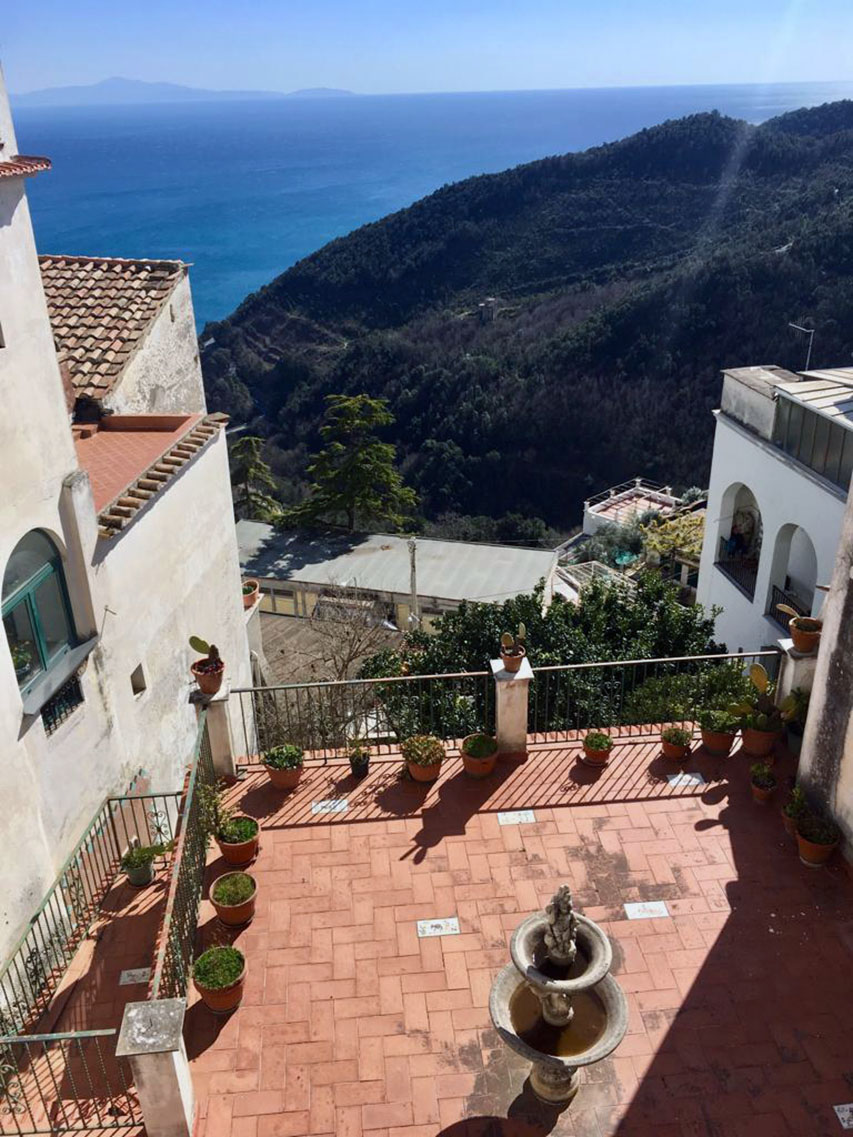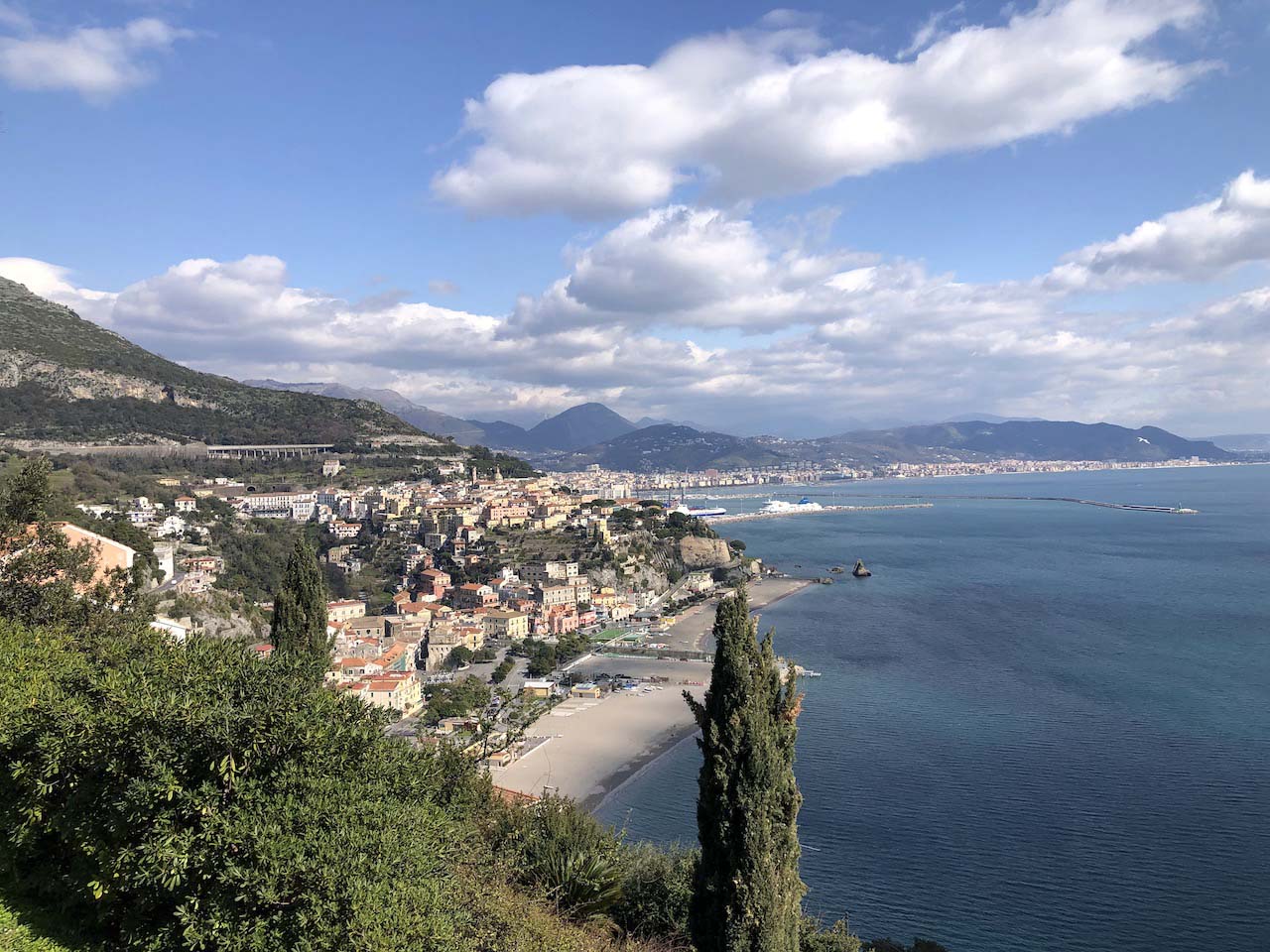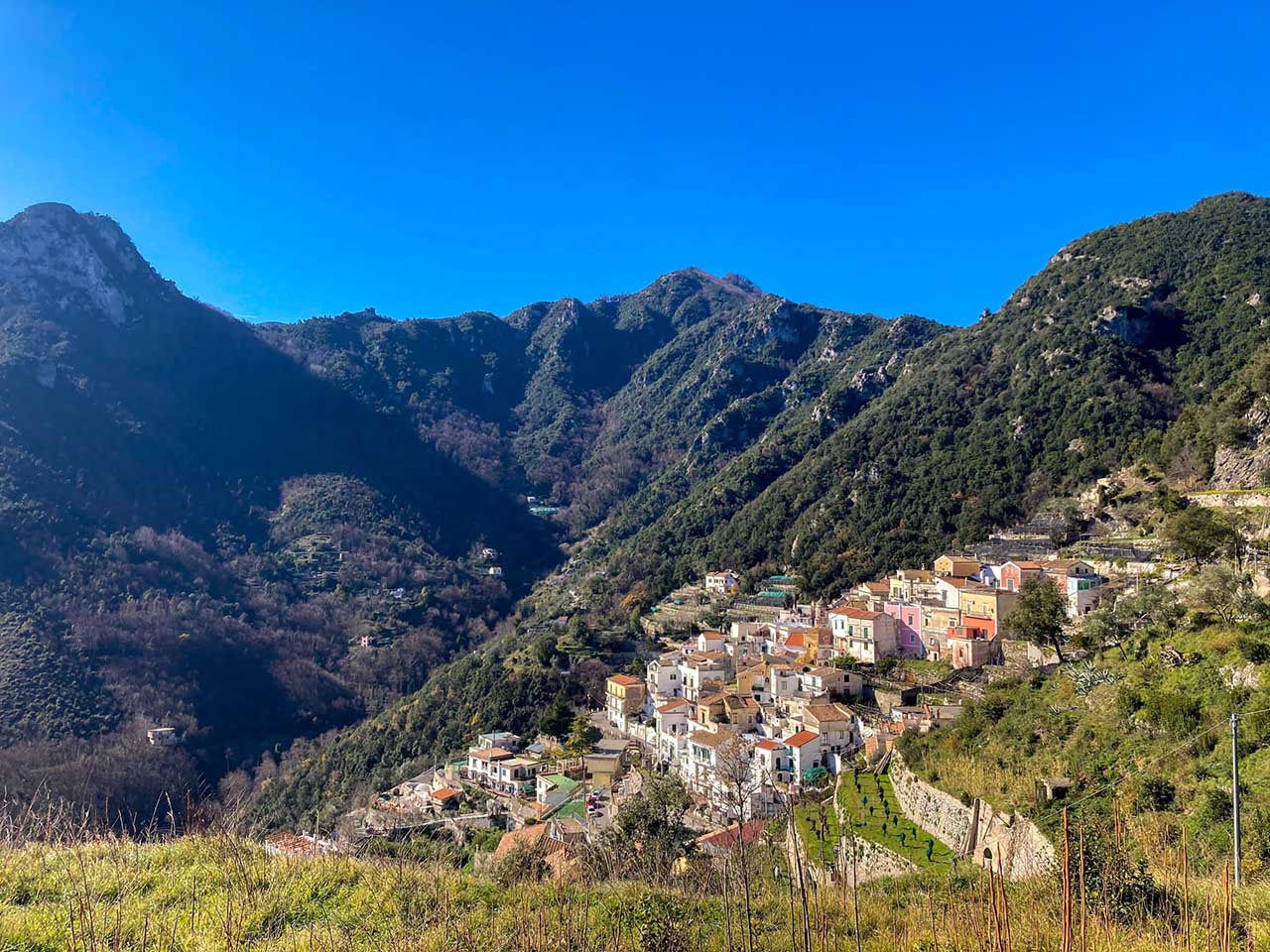Part of the Association of the Most Beautiful Villages in Italy, the tiny hamlet of Vietri Sul Mare is an ideal destination for those who love art, trekking, and good food.
By Anna Volpicelli, cover photo by Michele Inserra @cartotrekking
Walking through the alleys full of ceramic murals, silence hovers in the air. In front of the gates of the houses, plants and flowers sleep in painted wooden boxes. We are in Albori, the small village that climbs the mountains overlooking the landscape of Vietri Sul Mare.
“We are 400 inhabitants – says Mrs. Anna – and even if now you don’t hear noises except those of cars and school buses, in about a month, the vacation homes and bed and breakfasts will open, and the number of residents will begin to double.”
In the heart of the village
Located at 264 meters above sea level and surrounded by the peaks of Mount Falerio, Albori is part of the association of the Most Beautiful Villages of Italy. The colorful residences, built-in stone and lime, and embedded once served the inhabitants to hide from the invasions of the Arabs and to local sailors, returning from their exploits, to identify and recognize their homes.
Small terraces of lemon trees frame villas that seem suspended in the sky. Stairs with majolica inlays lead to the main square, where there is the Church Santa Margherita di Antochia of greek-oriental imprint, built in ‘600. This sacred place is located at the center of a belvedere, from which you can see the iconic coastal landscape with its cliffs overlooking the sea and the width of the Gulf of Salerno. Inside the church are frescoes and paintings by the painter Belisario Corenzio whose art was prolific in the Kingdom of Naples between ‘500 and the first half of ‘600.

From majolica to the nature trail
The square in front of the church is decorated with majolica tiles created by great master potters. Among them is the one of Laura Marmi, an artist from Friuli who moved to the province of Salerno to study pottery in-depth. Those of young apprentices such as the students of the Castaldi – Raito middle school on which it is written: “Albori, Raito, Dragone a Benincasa are the first hillock of the Amalfi Coast. It is up to us to preserve the beauty and decorum…”.
On the left of the square, there is a small road that, between one step and another, leads to a naturalistic path that leads to the chapel of Santa Margherita. This panoramic point offers a 360-degree view of the internal landscape. Proceeding in this direction, one arrives at a mule track that leads to Iaconti, another small hamlet of Vietri Sul Mare.
Local Taste
Besides art and beautiful landscapes, Albori is also a destination for those who love food. Walking along the main street, you will find the New Garden restaurant, managed by Luigi and Antonella. The cuisine, based on fish, offers fresh dishes made with the day’s catch.
“People want to rediscover the flavors of the tradition, and we build a menu based on local recipes with some reinterpretations. It’s a simple cuisine, and we do everything ourselves”, says Antonella, who runs the kitchen along with two chefs. From anchovy dishes to cod or roasted octopus on pumpkin cream to pizza (they also have a wood-fired oven) to desserts. “Our dessert offerings are varied, but our baba is one of the most popular.”
Walking down the street, however, we arrive at the Agriturismo Il Cavaliere de Conti, which offers mainly local meat dishes, including platters of cold cuts and cheeses, first courses and ribs, or grilled meat. The Bruschetteria Albori has made a name for itself all over the coast. For a more informal lunch or dinner but of excellent quality. Among the options is the Bruschetta Limana, with walnut cream, speck, arugula, baked melted scamorza cheese, and a drop of honey, or the Bruschetta la Bestemmia with baked goods melted scamorza cheese and fresh house sausage slightly spicy.

Through Raito
To get to Albori, the route starts from Marina di Vietri for those who love to walk. From here begins a path that passes through Raito. Famous for being the seat of the laboratory of the renowned ceramist Lucio Liguori, the name of this small village derives from the Latin “ragitus,” which means kissed by the sun. Raito is famous for hosting Villa Guariglia, the former historical residence of Raffaele Guariglia, owner, Italian Ambassador of the Order of Malta, and Minister of Foreign Affairs of the Badoglio government.
Upon his death, the Ambassador left his Villa to the Provincial Administration of Salerno to make it a Center for Studies on his life. The Villa, conceived as a permanent exhibition, contains objects and memorabilia collected throughout his life. Among these are Masaniello’s waxes, small painted wax reproductions, a collection of mother-of-pearl fans, paintings, watercolors, an artistic crib from the 1700s, and an extensive library containing over 4000 volumes of various kinds, including historical-diplomatic, political science, and economics.
Villa Guariglia also houses the Provincial Museum of Ceramics with works that tell the territory’s art made by famous artists, including Vincenzo Pinto, Giovannino Carraro, Giosuè Procida, Salvatore Procida, Irene Kowalska, Elle Schwartz, and Richard Dolken. Since 2001, the collection has been integrated with an exhibition of riggiole, tiles used to cover and decorate the floor.

